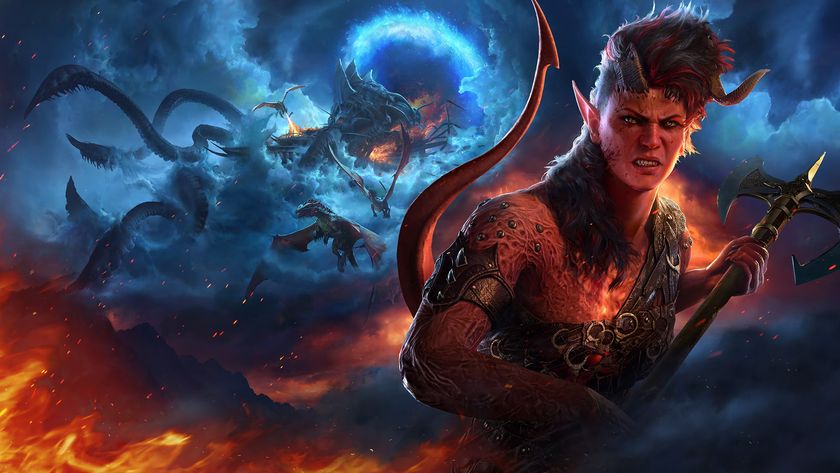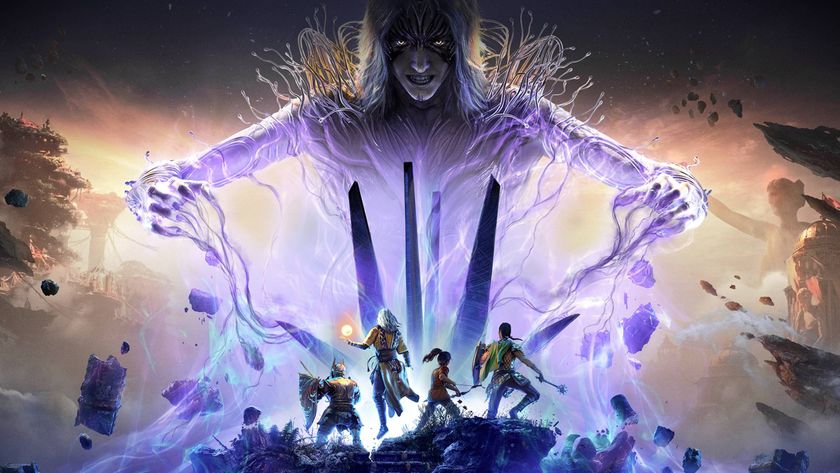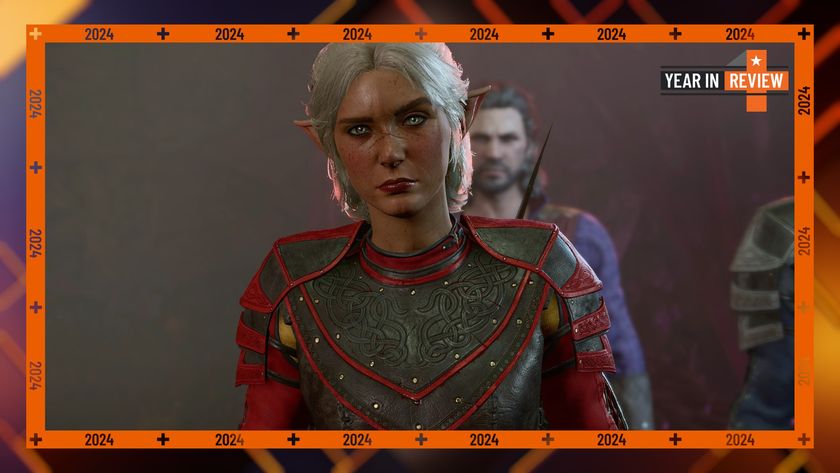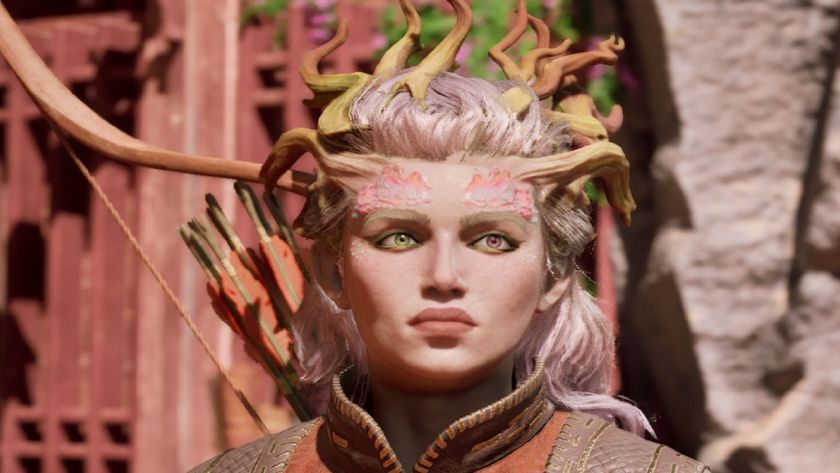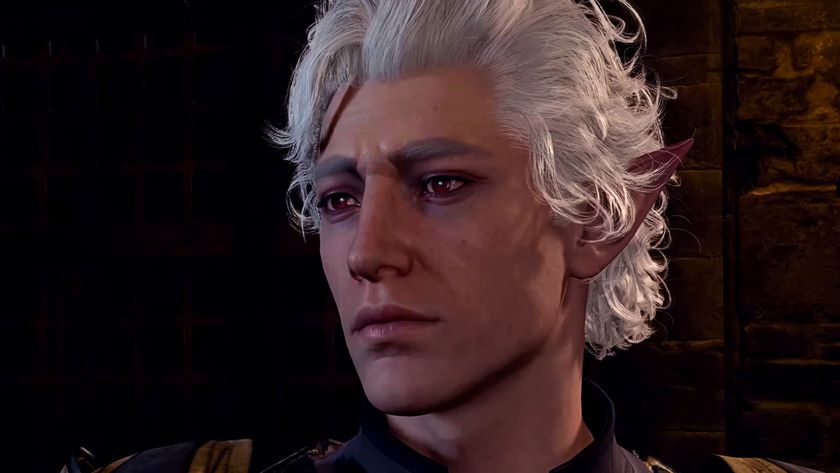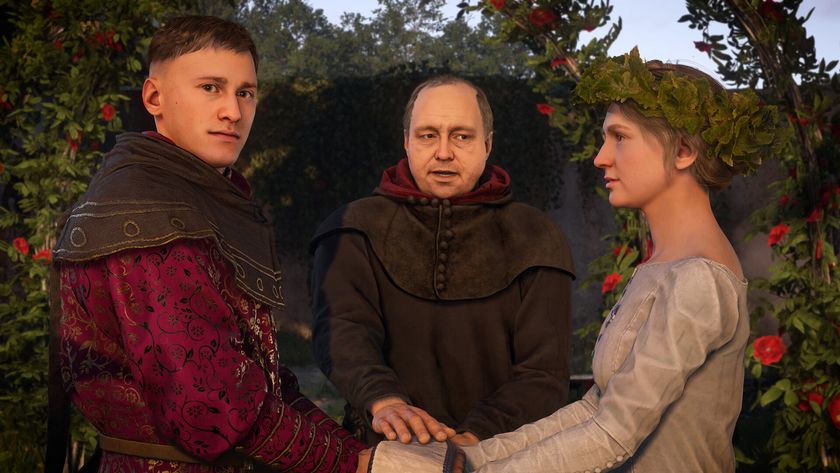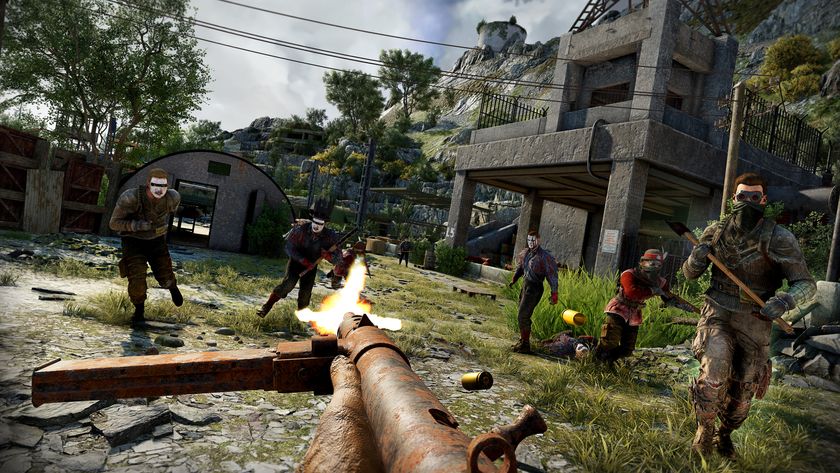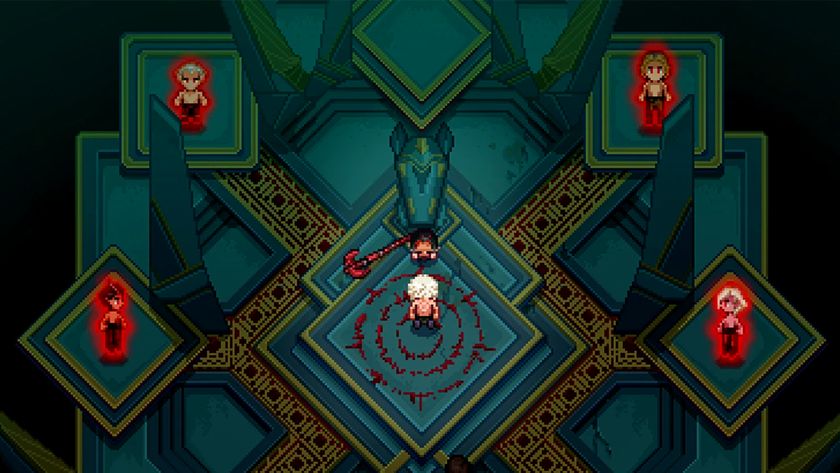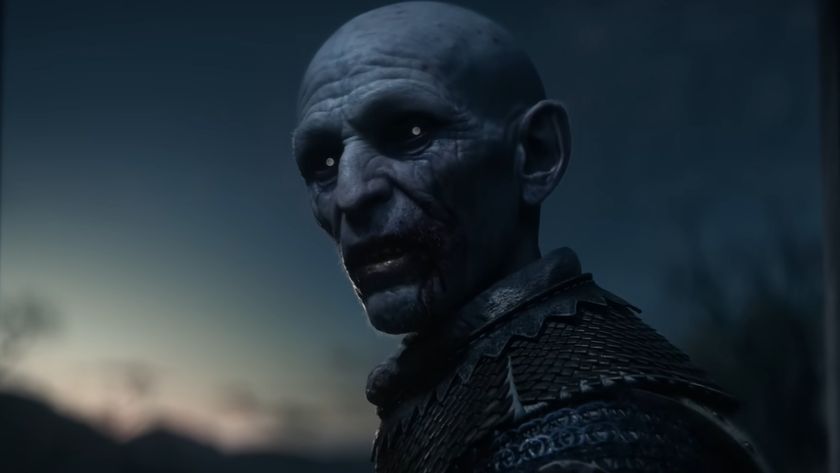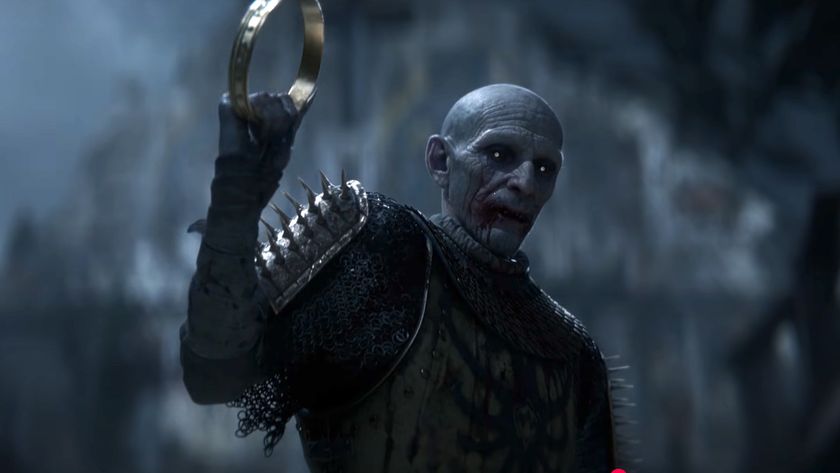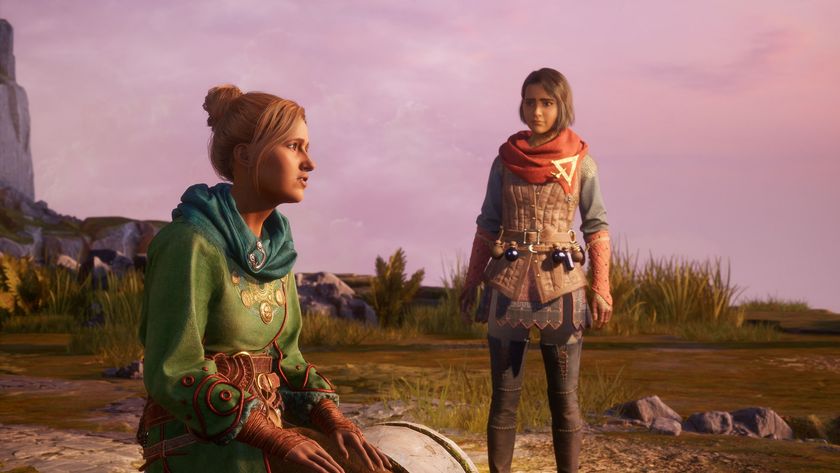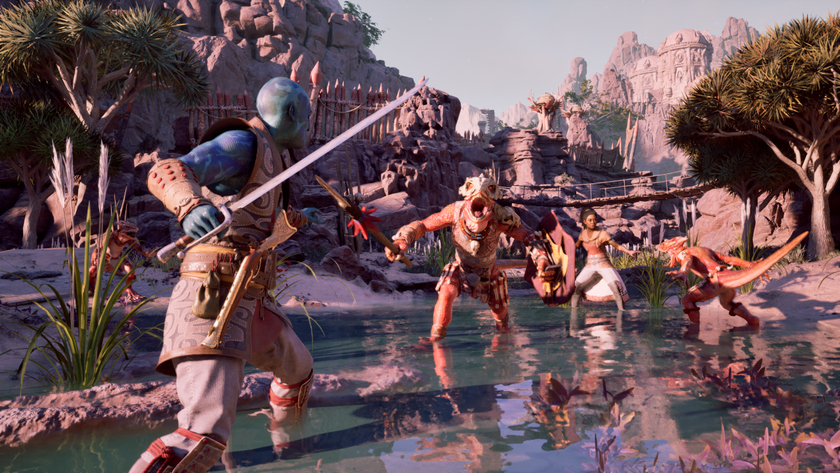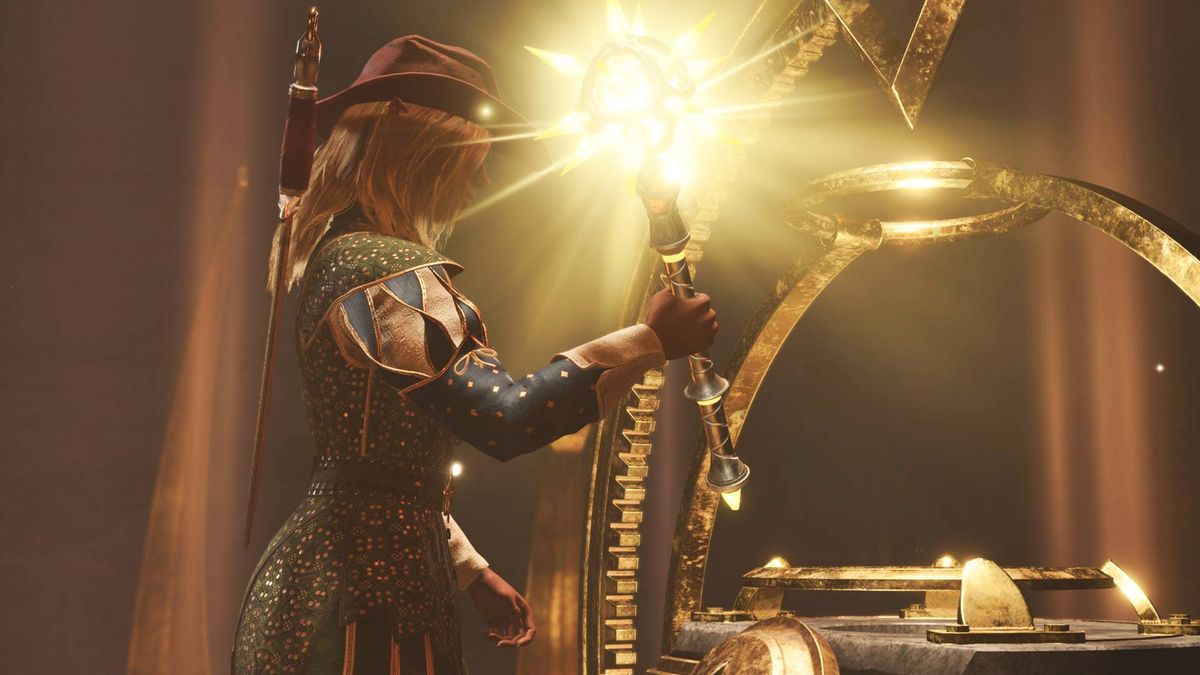
For my money, the single best moment in Baldur's Gate 3 features a chaotic flight from the agents of an angry Lich, a dance down a trap-filled gauntlet, and a face-off with a literal doomsday device. Heart firmly in my mouth, I genuinely wasn't sure if I'd live to tell the tale. But this moment – the culmination of my favourite side-quest in my dozens of hours in Baldur's Gate 3 so far – is so well-hidden that your storytelling stars must truly align to even get to see it.
This article contains spoilers for the transition from Baldur's Gate Act 1 to Act 2.
Once you've sided with either the tieflings or the goblins in Baldur's Gate 3 (and left the corpses of your enemies strewn over half the map in the process), you'll be told that the next stage in your tadpole-removal journey can be found in Moonrise Tower, far to the West. To get there, you'll be told to travel via either the Baldur's Gate 3 Underdark, or a nearby Mountain Pass. Both paths will eventually bring you to Moonrise, but depending on where you go, you'll have very different experiences along your journey.
The Underdark will take you through a village of mushroom people at war with some ornery duergar, and culminates in one of the game's biggest, baddest boss fights. The Mountain Pass, by contrast, seems significantly more chill, but it doesn't take long before you find yourself in the middle of a Githyanki creche. If you've spent any time with Lae'zel, you'll know that different creches uphold different rules, and if she journeys with you she'll pass plenty of judgement on everything from their teaching habits to their young-rearing traits to their choice of reading material.

Make your way through the creche without upsetting too many of your hosts, and you'll eventually find yourself face-to-face with Vlaakith, the forever-queen of the Githyanki race. She's a pretty unpleasant character, especially if you're not prepared to follow Githyanki convention, and she's happy to sic her goons on you the second she's finished with you. After the ensuing scuffle, you've got a choice to make – fight your way back through the entire creche, or try a nearby side-door in an attempt to escape.
Into the Light
The Githyanki creche is set in an abandoned temple to Lathander, the D&D god of spring, birth, renewal, and most importantly, the Dawn. Otherwise known as The Morninglord, you piece together aspects of his church as you journey through the temple; a Guardian of Faith sits in a barricaded room, the acolytes who summoned it long-dead; a massive stained-glass window records the lives of his most devout priests; a letter describes the power of something called Lathander's Lance, a weapon almost literally divine in its potential power.
You'll also learn the history of the temple itself. A relic – droplets of Lathander's blood – was vulnerable, and so in an attempt to protect it, the temple was built around it, in situ. Hundreds of years later, with the temple in ruins, it's still hidden somewhere in the building's bowels, but as one of my party members pointed out, that's just asking for trouble. A divine tool defended by a few stone walls and some priests? Anyone could come and try to snatch it up.
Sign up to the 12DOVE Newsletter
Weekly digests, tales from the communities you love, and more
The temple itself is a space unlike most of what you'll find in the rest of Baldur's Gate 3. There are other spaces of worship, other ruins, but this is different. It's a space that allows for quiet mystery, of exploration for the sake of it, even as you have to fight off the pests that have come to occupy it in its ruined state, or delve deeper towards the Githyanki that now squat beneath its halls. While Baldur's Gate throws up dozens of secrets and hidden paths, none feel as subtle as this temple, sitting mostly empty, the bodies of its former inhabitants resting quietly in its halls.
Chaos in the calm
By contrast, the Githyanki presence is jarring. This is a race that's brutally efficient and deeply militaristic, cultish in its violent preservation of its status quo, scurrying ant-like through this former place of worship. And so when the time came to flee the temple, perhaps it was no surprise that I decided to take a more hidden path out.
That path took me back to the quieter corridors of the temple, a forgotten basement where I could catch my breath. A cunning puzzle solution later, and I was in an even more secret corridor, this one filled with traps. No match for my rogue, I eventually found myself facing down a pedestal containing that relic – the Blood of Lathander, contained within a legendary mace.
Unfortunately, I didn't have the key to free that weapon from its display. Unfortunately, it was also perfect for my cleric, who'd been using a standard weapon through the entire game, and I therefore had to have it. Returning to my rogue as the most light-fingered member of my party, I figured I'd try and prise it free, assuming that it would be firmly rooted in place without the key. With both the game's narrator and the other members of my party urging me to reconsider, I yanked it free.
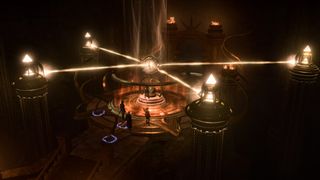
I reflected on how easily I could have missed this
Immediately, the rogue was trapped within a magical barrier as sirens wailed, and a cutscene saw that divine doomsday device whirring to life and pointing firmly at my party. Escape from the prison was a matter of a quick Misty Step, but getting clear of the blast zone was another matter entirely. I opted instead to disable the device, destroying the alarms and powering the down the Lance with seconds to spare. It was only a couple of minutes of gameplay, but it was one of the most tense and uncertain moments I'd had so far – even the absolute worst that the Absolute had had to throw at me paled in comparison to the fantasy equivalent of a tactical nuclear strike.
Wandering, shell-shocked, from the temple, I reflected on how much I'd enjoyed the journey that had brought me to the Light of Lathander, but also how easily I could have missed it entirely. I could have chosen to go through the Underdark instead of the Mountain Pass. I could have skipped out the Githyanki creche. I could have fought my way back through the temple. I could have failed to solve the puzzle, or turned back at the traps. I could even have found the key somewhere in the world that would have meant I never activated the Lance.
That a moment that exciting, that intense, and so quintessentially D&D could so easily go unnoticed is testament not only to Larian's storytelling expertise, but also to its confidence in its own work and its deep understanding of the roleplaying experience. As a D&D Dungeon Master myself, I know how easy it is for players to simply miss the big reveals or the cool moments. To let that happen in a game so dense, detailed, and hand-crafted as Baldur's Gate 3 shows that Larian is fully dialled in to its source material.
Our Baldur's Gate 3 review outlines more of the ways in which Larian nails its D&D background.

I'm GamesRadar's news editor, working with the team to deliver breaking news from across the industry. I started my journalistic career while getting my degree in English Literature at the University of Warwick, where I also worked as Games Editor on the student newspaper, The Boar. Since then, I've run the news sections at PCGamesN and Kotaku UK, and also regularly contributed to PC Gamer. As you might be able to tell, PC is my platform of choice, so you can regularly find me playing League of Legends or Steam's latest indie hit.
